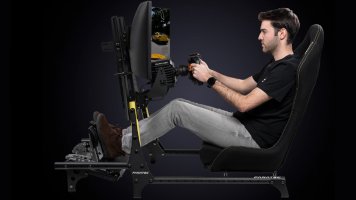If anyone is interested in building your own tactile amplifier I did the following for my 4 x Aura transducers, and it has been working for almost a year now. My old Yamaha AV amp kept shutting off on me.
I guarantee that this is NOT audiophile quality, but for low frequency bumps it works fine.
I also wouldn't suggest this if you aren't comfortable wiring electronics together.
I did this because on paper it looked like it should work. It seemed cheap and I built it just to see if it would work. So far it's worked fine.
400W PS for $23.
4 channel x 100W per channel Class D amplifier board $49.90.
2 x Level Controllers $7.69 each.
eBay: 400W 11A 36V AC to DC Single Output Switching Power Supply SMPS S-400-36 For LED
Parts Express: Sure AA-AB33184 4x100W TDA7498 Class-D Amplifier Board
Parts Express: Axxess AALC 2-Ch Remote Level Controllers
The Class D amplifier wants 39V and the PS had a pot that could be adjusted to turn the 36V up to 39V.
The Monster On/Off switch is just something I had laying around

It's a little ghetto, but it works. I've added a 4th output to it.
I may repackage it now that I'm building up a P1 Cockpit.










